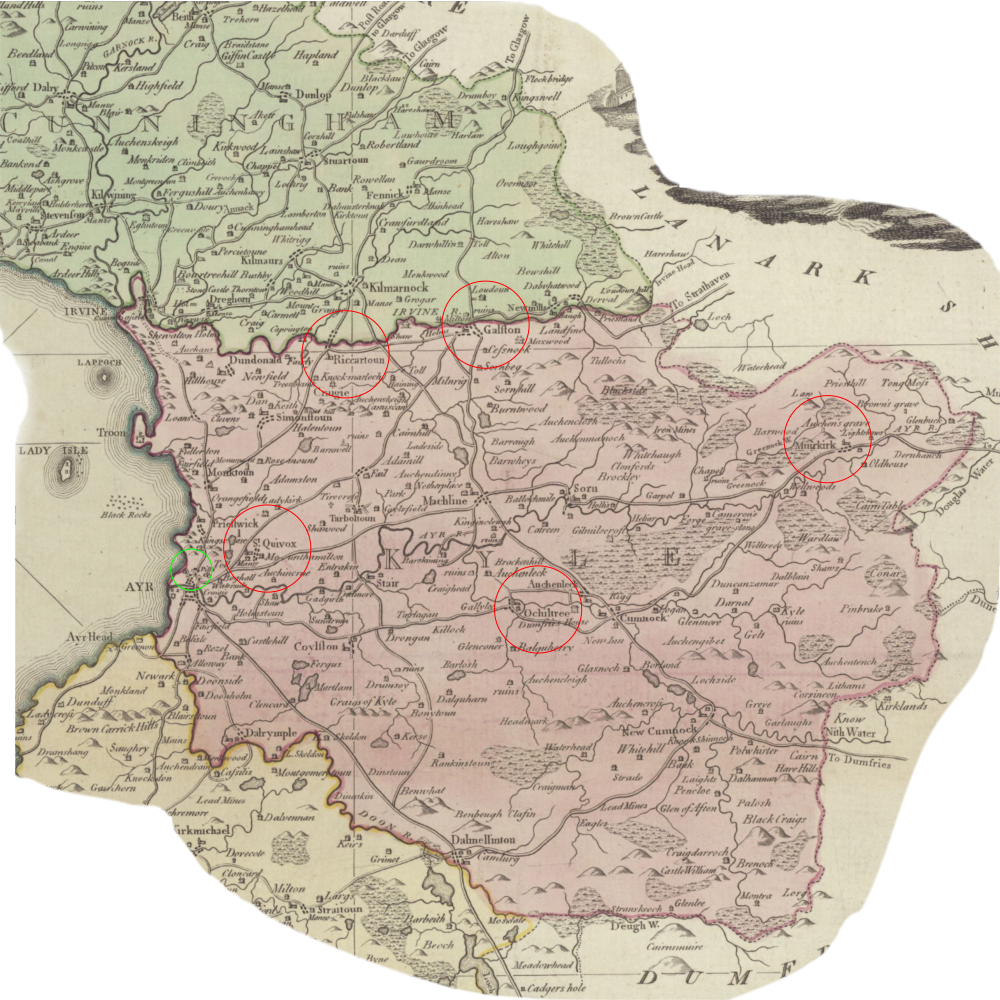Some of the locations where William Howat and his family lived are shown on this map of the time. Having been married in Muirkirk, William and Jean
had their first child Janet in St Quivox. Euphemia was born in Old Monkland which is off the map to the north and the children Helen, William and John
were born back in Muirkirk.
Newton upon Ayr (green circle) was originally a burgh in its own
right on the north side of the River Ayr. In 1873, the Burgh and the
Royal Burgh of Ayr merged. The main feature of the old burgh is the
Georgian Steeple which stands as a traffic island at King Street.
The Bruce family line is descended through William and Jean’s
son William Howat (1811-1878) who worked as a coalminer all
his life. The records show he spent most of his life living in
Riccarton and Galston.









